#1 – Boku Dake ga Inai Machi
Maybe there was just slightly more doubt as to what the final post of the year was going to be in 2016 vs. the last couple of years, if only because there are shows left off the Top 10 list this year which could plausibly be argued to be ones I might consider for the #1 slot. But I think most of you who follow the site knew I was going with Boku Dake ga Inai Machi once the #2 spot as confirmed yesterday. And while it was a close call, it’s one I’m totally convinced is the right one in the end.
Boku Dake is a funny sort of series in its relationship with the viewing audience. In the end it’s still regarded overwhelmingly in the positive (it’s #50 all-time on MAL, for example) but there was a definite backlash against it for the concluding arc. I’m in the same position now as I was in my series finale post – I’d like to talk about the ending and how it compares to the manga’s, but I really can’t because some of you will hopefully read that someday. And it’s hard to explain why I think the anime ending works without delving into its similarities and differences with Sanbe Kei’s original ending.
In the end, I think A-1 Pictures (who remain the only studio to feature on every LiA Top 10 list) – behind the outstanding director/writer team of Itou Tomohiko and Kishimoto Taku – did remarkably well in preserving the substance and impact of the original ending within the constraints they were working under. 12 episodes was an awkward number for Boku Dake ga Inai Machi – not enough to comprehensively adapt the manga ending (that would have required 3-4 more eps) and too many to use the logical intermediate stopping point. The questions Sanbe asks – and answers – in his ending survive in anime form, but some narrative shortcuts are taken to get there. C’est la vie – a lot of folks dislike the manga ending to begin with but I think that’s mostly because it breaks with manga convention so totally.
Irrespective of all that, Boku Dake on the whole is a masterwork – a great adaptation of one of the best manga of the 21st Century. I was thrilled when this anime was announced because I do consider the source material a classic, but the anime actually improved on it through the choices it made. For example, the way it communicates the experience of the adult Satoru being in the child Satoru’s body through the use of internal narration and cinematography. The casting and music was superb, and while there were a few inconsistencies with the visuals, on the whole Erased was the most beautiful A-1 series since… Well, since I can remember, really.
It would be no exaggeration to say that there were two episodes of Boku Dake I’d rank among my all-time Top 10 anime episodes (a list which I get more requests for than any other), and another couple that wouldn’t miss by much. It’s all brilliant, but the arcs involving Kayo are obviously the most conventionally dramatic, and they provide the series’ highest emotional crescendoes. And the relationship between Satoru and his mother (both when he’s a little boy and a fully grown man) may be my favorite mother-son bond in all of anime or manga – and Sachiko my favorite Mom. She’s a marvel of blunt, fearless and quietly heroic parental love – and in Satoru those heroic qualities manifest themselves too.
Boku Dake ga Inai Machi is yet another example of anime and manga using fantasy to enlighten reality – to explore issues of familial love, control, self-doubt and pathological evil. While there are supernatural elements at the heart of the narrative the story itself is grounded in the bedrock of real emotion. It’s a love story, a thriller, a romance, a comedy, a tragedy – because life itself is all those things. In my view it offers one of the most thematically and stylistically complete experiences in anime history, and even in a solid year like 2016 it’s my clear choice as anime’s best series.
#2 – Shouwa Genroku Rakugo Shinjuu
My life would have been a lot easier if I’d just called Shouwa Genroku Rakugo Shinjuu a split cour and ranked it on the 2017 list. But that would have been inconsistent with the rules I’ve tried to apply even-handedly from the start, so I didn’t do that. I’ll talk about the reasons why my #1 series is what it is tomorrow, but it’s no stretch to say that it was a tough decision – Shouwa Genroku was a truly great series and figures to be a strong contender for a high placement in 2017 as well.
The essence of this series is time, I think. It’s every bit as much a character as Sukeroku or Kikuhiko, and its presence is always felt profoundly – especially as it applies to Kiku, who feels the weight of it more acutely than anyone else. Rakugo Shinjuu makes a bold choice in giving away the ending of the first season in the first episode, which takes the series solidly into Greek tragedy territory.
There are a lot of reasons to love this series, starting with the impeccable direction of Omata Shinichi (I wonder how he chooses which name to apply to which job?). His narrative instincts are spot-on, and while Deen will rarely be confused with Bones or Production I.G. in terms of animation, they are capable of real beauty – and it seems that Omata-sensei tends to be involved in the shows that achieve it. Tokyo over the decades comes alive in this series (The main setting is in Kagurazaka, mere blocks from my Tokyo apartment, so I may be biased in favor).
Perhaps more than any series this year, though, Shouwa Genroku Rakugo Shinjuu relies on its cast to succeed. Most especially Ishida Akira and Yamadera Kouichi, who play the twin pillars of the first season. Each of this men is a veteran seiyuu by any standard, but it’s rare for them (especially Ishida, who’s still much-coveted for trope-driven roles) or anyone else for that matter to be given this sort of material to work with. Each actor must bring a huge range of emotions to their roles, on-stage and off. Yamadera does a remarkable job of projecting Sukeroku’s youthful bravado despite his own age (he’s 55) in one of the most vibrant and electric performances of the year. And it’s a revelation to be reminded of just how subtle and brooding Ishida can be when allowed to stretch.
All of the top five series this year are very different, but they all represent a reason to cherish anime as an art form. The tonal and thematic diversity of it is what sets anime apart from Western animation, and that’s why it’s so agonizing to see that diversity on the wane in recent years (with 2016 being a seeming aberration of that trend). There’s no reason Shouwa Genroku Rakugo Shinjuu couldn’t have been a live-action instead of an anime – but then, there’s no reason Picasso couldn’t have taken photographs of Guernica instead of painting it. Shouwa Genroku truly is anime as art, and as long as there’s room for this sort of expression in it, anime has a chance to survive as a relevant medium.
#3 Udon no Kuni no Kiniro Kemari
As is my custom when including just-concluded series in the year-end Top 10 list, I’m not going to write extensively about Udon no Kuni no Kiniro Kemari here. After all, you’ve got 1400-plus words from me that were just written last weekend if you want to know what I think about it. But rest assured, placing it this highly in an above-average year like 2016 is an accurate reflection of the high esteem in which I hold it.
If I’m honest, my initial take was to rank Udon no Kuni fourth, just behind Mob Psycho 100. But the finale was such a tour de force that I felt the series as a whole needed to jump up a notch. I’m not sure I’ve ever seen a more effective conclusion for an ongoing manga series – it had poetry, pathos and a feeling of closure. This was an emotionally powerful show from day one – I can’t remember another one-cour anime making me tear up as often as Udon no Kuni did. But the finale really pulled out all the stops – in a week of great and emotional final episodes, it topped everything that came before it.
Like all the series in my top 5, I could make a case for ranking Udon no Kuni as the top series of the year. It’s really minute differences at this point – I don’t think this series put a foot wrong in 12 episodes. Perhaps it might be called a show of modest narrative ambition, but Udon no Kuni is incredibly authentic and perceptive. It achieves emotional profundity on so many occasions because it captures so many elements of the human experience (especially that of young adults, especially in modern Japan) so accurately. It isn’t going to succeed commercially but I’m thrilled that this wonderful story was given the chance to unfold on-screen.
#4 – Mob Psycho 100
To be honest I ground on this spot for quite a while. In fact I allowed myself the possibility of changing my mind right up to the moment I sat down and started typing, because I wanted to make sure I felt right about the direction I chose – and in the end, went against the direction I’d been leaning for most of my deliberations.
Mob Psycho 100 wasn’t always the #4 show in this list – in fact, I would say it was a candidate for the top series of the year, which should tell you how close the top four spots are (this is the closest-packed top 5 since I’ve been doing these lists, in fact). MP100 is a pretty remarkable achievement, all things considered – if anything separated it from the shows above it, it might be a couple of episodes that were just a bit less stellar than the rest. I hate to even ding it for that, because I think director Tachikawa Yuzuru intentionally chose to start the series with an atypical episode and in effect, punk new viewers about exactly what Mob Psycho 100 was going to be. And it worked (perhaps a hair too well).
I think it’s fair to say that adapting any work by the mangaka ONE presents an interesting set of challenges. His art style is unique (and unlike One Punch Man, Mob Psycho is not filtered through the intermediary of a well-known artist like Murata Yusuke), and his storytelling unconventional. While I think Tachikawa-sensei would probably excel at the helm of almost any series, pairing him with ONE was a stroke of genius by Bones. These are two men with distinct and wildly creative perspectives, and Tachikawa merges them beautifully here. MP100 was the visual standout of 2016 for me, hands down.
More than that, though, Tachikawa clearly embraces the essence of Mob Psycho in this adaptation. His prior work was of course his own creation (Death Billiards/Death Parade) but he and ONE seem to be on the same wavelength. Mob Psycho is one of the most humanistic series you’ll ever see – an unapologetic battle between the forces of decency and humility and those of selfishness and lust for power.
Mob Psycho is also arguably the most interesting metaphorical anime take on early adolescence since FLCL, and in Mob offers up a thoroughly believable and (frankly) moe lead. The web of relationships that winds through the series is complex and subtle, and of course it offers up a breakout character where we might least expect one in Reigen – who’s not only much more than he seems, but one of the most interesting adult male characters in anime in years. Even early on, before we really get to know him, ONE and Tachikawa (note that the latter changed the chapter order considerably to help communicate this) make sure we see that there’s a very genuine bond between Mob and Reigen, and the entire series is really built around that bond.
Bones is the shit, plain and simple – and so is Tachikawa, who’s now produced masterpieces for both Bones and Madhouse. I think he’s the most exciting young talent in anime along with Matsumoto Rie, and I’m anxious to see where his career takes him. I hope, of course, that one place it does is more seasons of Mob Psycho 100, and there are solid indications (including Bones’ president Minami Masahiko’s cagey answers at Anime Expo and the symbolism in the final eyecatch) that this is in the works. The first season sold pretty well (not as well as OPM, but of course it’s not unusual that an author’s better series sells less than his lesser – though in this case still excellent – one) and I think the chances are very strong that we haven’t seen the last of Mob and Reigen in anime form.
#5 – Orange
Now we’re at the point of the list where the only real question is placement. I’ve known since my earliest deliberations what the top 5 shows of the year were going to be, but it’s probably not an exaggeration to say that all of them were contenders for the top spot at some point in their run. For sure, as Top 5’s go this one is more tightly packed than most.
Orange, at its best, was one of the most emotionally powerful anime experiences of my life. I’ve heard all the charges against it – emotionally manipulative, illogical, passive main character. Frankly none of them hold much weight with me. And as with Watamote, I suspect one’s definition of realism is colored by whether or not they’ve dealt with depression in their family or close friends (or themselves).
Orange is another one of those series that uses magical realism as a device to explore the human psyche. Whatever you think of the conceit it’s built around, it’s an effective mechanism for character drama. Orange is a perpetual tug-of-war between possibility and regret (it even carries the metaphor so far to include a literal tug-of-war). Emotions are a roller-coaster from week to week as each side rises to ascendancy, only to be eclipsed in the next episode. It’s also a musing on the power of love – not the selfish, possessive kind but the kind that makes us do something for another person without hope of gain for ourselves (or perhaps, the contrast and conflict between them).
Here’s how I see it. Anime has become so obsessed with irony that any series that plays it straight emotionally is dismissed as manipulative and (God help us) “melodramatic”. Orange is a dinosaur in that sense, and I’m very glad it exists. It gives us characters who are flawed, weak (some more than others) and asks us as an audience: will we judge them, or try to understand them? Will we sit in our Herman Millers and laugh at them for their poor decisions, or realize how difficult it can be to do the right thing – even when you know the easier thing will lead to a bad result?
There are some issues with Orange, no doubt – like people, anime aren’t perfect. Telecom Animation started out with some of the loveliest visuals of the season, but their budget/scheduling problems were quite apparent in the second half of the series. A couple of themes were a little repetitive. But on balance, this was an incredibly deep and powerful series. Ironically given how the otaku community mocks Orange and shows like it, this (like Watamote) is the essence of literal moe – the urge to protect the characters on-screen. How wonderful it would be to share life lessons with kids and actually have them listen, to avoid the pain you can see is coming. But in Orange as in life, there’s just no substitute for experience – even if the adult trying to guide you is yourself.
#6 – 91 Days
If the 2016 Top 10 list started off as a parade of exemplars on how to do a good manga adaptation, these last two entries are an equally good lesson on how to do a great original series. I don’t have a preference – adaptations of manga we love can be incredible experiences, but there’s a lot to be said for the artistic freedom of a series custom-fit for the screen.
Shuka, the studio that split off from Brain’s Base (and took much of their top talent with it) has had an uneven start to life, but I think 91 Days is the series that really put their stamp on anime. There are a few uneven spells in the production (including a midpoint recap episode) but on the whole, 91 Days is a stylish and handsome piece of work. The look is radically different from what we usually see in anime – but then, so is just about everything else about this show. In the hands of the outstanding writer Kishimoto Taku (whose stellar career in anime had previously been limited to adaptations) and director Kaburagi Hiro (one of the most under-appreciated geniuses in the field, with Tonari no Kaibutsu-kun and Hoozuki no Reitetsu under his belt) 91 Days was a masterwork of storytelling that put most of the medium to shame.
More than a conventional anime, 91 Days is a homage to the classic American organized crime story – from the golden of of Hollywood and the likes of Howard Hawks to Scorcese. Most of all it recalls The Road to Perdition – which is of course based on the legendary 1970 manga Lone Wolf and Cub (Kozure Ookami), so perhaps there’s something to a full circle quality to this series. As with most great mafia stories there’s a strong element of the Greek tragedy to 91 Days, a sense that we know how everything will end (and that it won’t end well) and the real drama comes from seeing how we get there.
Many anime try and capture an American cinematic style, and most either intentionally or not come out with something that feels very much a Japanese person impersonating an American accent (Baccano! is an example of a series that very successfully does this on purpose). I’m hard-pressed to think of one that so successfully looks, sounds and feels like a Hollywood film as 91 Days does. There are so many little details Kishimoto and Kaburagi get just right, and it doesn’t hurt that the bones of Kishimoto’s story are a rock-solid foundation to build on. This isn’t just a random take on a mafia story, it’s a damn good one – and it’s compelling from the first 10 minutes (which is the best opening half-episode of any anime this year) to the final frames.
Those final frames are controversial, and it’s not surprising. Ambiguous endings are pretty common in Western stories of this type, but I can count on one hand the times anime fans have responded well to them. But I felt then – and still feel now – that this was the right way to end this story. You can imagine many possibilities, but the point of 91 Days is that what should have happened is irrelevant – we don’t live in that sort of world. As you’d expect 91 Days was a commercial failure, as the shows which end up on my Top 10 lists almost invariably are, and there’s certainly no indication of anything remotely like it on the docket for 2017. I sincerely hope there remains a place in anime for series like this one, because it’s the thematic and stylistic diversity of the medium (so under threat at the moment) that for me makes it a unique and irreplaceable art form.
#7 Concrete Revolutio
If you’ve been following my writing this year, I suspect you have a pretty good idea what the top 5 series on my list for 2016 are (though not necessarily the order – join the club on that one). That means the real drama is in these next two picks – because as much as they reveal who’s made the list, they’re also going to reveal who hasn’t.
Concrete Revolutio, like the previous three entries, wasn’t an easy call for the Top 10 – not because it’s not deserving, but because so many others shows were too. ConRevo is also the most flawed series on this list, I would say – it took a little while to find its footing, and it had a few missteps along the way. But it’s here, another feather in Bones’ cap, and in the end there was just no way I could leave it off. Simply put, there wasn’t another series in 2016 that was as creatively ambitious and relentlessly imaginative as Concrete Revolutio. The sheer scope of what Mizushima Seiji and Aikawa Shou pulled off here was truly remarkable.
In some ways, ConRevo reminds me of Space Dandy in that it represents Bones’ unequalled willingness to take risks, to challenge the audience, to mine a wide swathe of visionary talents to creative a diverse sensory and intellectual experience. Aikawa’s master plan here is almost unbelievably complex – a series of leaps back and forth across time, a seemingly endless tangle of superficially unrelated plot and character threads which were all tied up in the end. Along the way he and Mizushima penned a love letter speculative fiction – to American and Japanese comic book heroes, to science-fiction, to fantasy, to Shinto mythology and Judeo-Christian alike. It also did something very rare in anime that Aikawa is especially inclined to do, and that’s take dead aim at the Japanese political establishment and fire both barrels.
If there’s a problem including Concrete Revolutio on this list, it’s only that it’s a tough show to describe in words. I had great fun writing about it, but damn, it was hard. You know I love character-driven series, but ConRevo (while it has a great cast) isn’t so much character or even plot-driven, but idea-driven. That’s an incredibly uncommon thing in anime and there’s are reasons for that – it’s damn difficult to pull off and it almost never makes money. ConRevo explored so many ideas over the course of its two cours (it was eligible for the 2016 list because it was a true split-cour series) – the desire for heroes, the grey abyss between the spheres of what we see as good and evil, self-reliance and dependence on others. It’s an intellectually dense as any anime in years, and richly rewards anyone with the patience to watch and listen closely to what it has to say.
Concrete Revolutio isn’t a perfect series, but its misses are from over-reaching, not from playing it safe – and there aren’t many of them at that. It’s a model of what a great studio should be doing – using the profits from its more commercial series to fund works which reward its creative staff and elevate the medium of anime itself. Bones had a fantastic 2016 and no series is a better example of why they’re arguably the best studio in the business than this one.
#8 – Shounen Maid
I suspect that of all the series that make this list, Shounen Maid is going to be both the most personal and the most divisive – the “bracket-buster”. In part that’s because it’s going to spark the inevitable question “What is he leaving off to make room for that??” Believe me, that question is not lost on me – I do think about it in a year as strong as this one. But if you take it as read that there are at least 4-5 series that are gut-wrenching omissions from my top 10, I kept coming back to one thing – when I viewed every series in terms of enjoyment and personal impact, there was no way I could not include Shounen Maid in the Top 10.
I freely admit I love the story with Shounen Maid – sure, the story within the series itself, but also the fact that it was almost universally disregarded and disrespected, almost utterly ignored. Hell, it was often mistakenly identified as an adaptation of a hentai doujin with a similar title. But for those few of you that chose to give it a chance, you saw that it was both light and entertaining and deceptively deep. It’s another one of those simple yet profound human stories I’m always going on about, and another example of a manga adaptation where the anime managed to improve on the source material.
In point of fact, even I – and it’s no exaggeration to say that I was probably this show’s strongest English-language advocate – underestimated how good Shounen Maid would be. I knew the manga (which is sadly stalled at about 20 chapters translated) was excellent, but I wasn’t prepared for how deep and subtle the anime would be. Shounen Maid is all about subverting expectations – of characters who are so much more than they appear to be, of situations that are far more layered and conflicted than they appear. I’m convinced mangaka Nakamura Yoshiko is intentionally toying with her audience by teasing at what seem to be tropes, only to completely upend them. But this series isn’t simply better than expected – it’s legitimately outstanding in its own right. You’ll find few that more expertly depict loneliness, insecurity and neuroses than Shounen Maid.
I only now realize that I noted in my series review post (which was my last of the Spring) that this series, Boku no Hero Academia and Tanaka-kun wa Itsumo Kedaruge were all packed so closely together that at the time I couldn’t rank them – and coincidentally, they’ve ended up as the first three shows on this list. I’d still say there’s very little between them, as different as they are – each was wonderful in their own way. What Shounen Maid brings to the table that perhaps no other 2016 series besides Udon no Kuni no Kiniro Kemari does is an unerringly accurate take on family and relationships, on the emotional bonds that tie us together – and those series also share a welcome focus on the essential kindness of the human spirit. Shounen Maid will, I think, be fondly remembered by a select few long after series that were far more popular in the moment are forgotten by all. It’s a series of substance and empathy, and one of my favorite shows of 2016.
#9 – Boku no Hero Academia
It was a great year for Bones, no question about it. In terms of consistency they may be the best in the business, they’re committed to hand-drawn animation even for action, and they have arguably the most ambitious and forward-thinking marketing vision in TV anime. When Bones does well it’s a good thing for anime – and when we see Bones announced as the studio for an adaptation for a beloved source material, fans are justifiably pleased.
That was certainly the case with Horikoshi Kouhei’s Boku no Hero Academia, which Shounen Jump insiders have been touting as the next big WSJ franchise almost since it was given a serialization. With several tentpole franchises coming to an end and Hunter X Hunter mired as ever in hiatus Hell, Shounen Jump needs to take great care with its next generation of star series – and that’s exactly what they did with BnHA. They gave it to one of anime’s platinum studios, and limited the first season to one cour to avoid burning through the source material too quickly. You can always tell which franchises Shueisha really values by how their anime adaptations are handled, and that care is apparent with Boku no Hero Academia.
There were risks in going with a one-cour first season, because BnHA starts slowly for an action series. It’s character-driven by genre standards anyway, and it takes its time with the mythology and origin story – time well-spent and absolutely vital. I was a bit worried that some of the audience might lose patience early on and indeed there was some grumbling, but Bones and director Nagasaki Kenji stayed true to Horikoshi’s vision and told the story the way it was written. Boku no Hero has so much going for it – a great protagonist and supporting cast, a uniquely Japanese take on American superhero genre canon – and by the end of the season, all of that had become unmistakably clear.
It’s fair to say the best is yet to come with Boku no Hero Academia. The manga gets better and better, more action-oriented but no less driven by its characters. Bones, as always, delivers the sakuga big-time when it comes to the set pieces but gets the small moments (especially in the relationship between Izuku and All Might) just right too. BnHA sold pretty well on disc by shounen standards, and the manga continues to grow its sales to powerhouse levels. Does that mean we’ll see a long-term, comprehensive anime adaptation? I suspect it does, but I’ll always worry until I see that next season announcement.
#10 – Tanaka-kun wa Itsumo Kedaruge
Make no mistake – this year’s Top 10 list is a tough one to compile (and the second 10 is no easier). There are really about 15 shows which feel like top 10 picks to me, and whichever ones I leave off, it’s going to hurt. So this seems a good time to reiterate that my Top 10 list is my Top 10 list. It’s a list of my favorite anime, and not an attempt to compile an absolute list of the objective top 10 anime of the year. I try to balance objective quality with pure enjoyment, yes. But ultimately it still comes down to one thing – my opinion. And one of the things I have to do is try to divorce my list from hype – because hype can influence critics strongly, whether they want to admit it or not (so can contrarianism, though – which is another trap I have to try and avoid).
With that said, Tanaka-kun wa Itsumo Kedaruge is my choice for the precious #10 spot. And rather than feeling like a stretch in any way, my take is that in an average year it would certainly place even higher. Silver Link took a manga I already loved, and they made it better. They fleshed out the simple and minimalist manga background art and created one of the most beautiful high schools in anime (based on a real one, apparently). They chose the perfect music, cast the perfect seiyuu. They added clever visual touches throughout, including some of the best eyecatches of the year, and nailed the OP and ED.
Tanaka-kun is a classic anime comedy – quirky, silly, loveable – yet also very smart and kind of deep. The cast of characters is uniformly great top to bottom, and they all get their chance to shine in the anime. The supporting cast is diverse enough that they allow the series to switch between a number of different comic styles, each of which it manages to excel at. And it all revolves around Tanaka-kun and his quest for the perfect idyll, which is (and I’m not joking here) very much a Buddhist journey. To take the classic animanga trope of the lazy teenaged boy and spin it so artfully was a work of genius by mangaka Uda Nozomi, and director Kawatsura Shinya lifts the entire presentation by a few notches in the way he utilizes what anime can do that manga can’t.
This is how adaptations should work – take what’s already a strong source material, and use the medium to make it even better. And it’s another example of Silver Link pulling that off, as they certainly did with Watamote. It’s a great way to start off this list – though it’s not the only show that I could have said that about, just the one that made the cut…
Honorable Mention – Osomatsu-san
OK, I’ll admit it – giving this slot to Osomatsu-san is a bit of a cop-out. In truth it very likely would have ended up on the Top 20 on its own merits, but there are already several shows whose omission from the list is going to be pretty painful. And given that this slot is traditionally reserved for the shows that don’t really fit into a conventional category but deserve some recognition anyway, I’m indulging myself – because Osomatsu-san sure doesn’t fit into any existing category in anime history.
The superlatives are so numerous and astonishing that it’s hard to know where to begin. #5 all-time in disc sales per volume at almost 65,000. The first series since 2000 (Love, Hina) to top the Oricon sales chart for two months in a row. And this is for a remake of a kiddie show from the 1960’s (it’s a manga adaptation) that’s already been remade once. It had some notoriety in its heyday (many famous people including John Lennon publicly mimicked Iyami’s “Sheeh!”) but even in Japan, Osmoatsu-kun had largely been forgotten – it was no Doraemon.
When Osomatsu-san was announced, I wasn’t even convinced it was going to be streamed or subbed. To say I completely missed the boat on this one is an understatement, but I don’t think anybody saw this coming. And truthfully, I still can’t totally explain it (and it’s not for lack of trying). I think, somehow, this series came along at exactly the right time and struck exactly the right chord with the anime-buying audience. It’s certainly appealed to female otaku, and has been unashamed to pander to that in hilarious fashion – but there’s more to this phenomenon than that. Somehow Osomatsu-san has managed to rather cruelly satirize the malaise that’s gripping the current “lost generation” of young Japanese while still making them feel good about watching it.
In the end, Osomatsu-san is just a very funny show. It’s not perfect, but then sketch comedy series always have hits and misses. But the good moments far outnumbered the bad, and the best moments (like Jyuushimatsu’s remarkably heartbreaking doomed romance and the most hilarious bits with Iyami and Dayon) were truly spectacular. We’ll be seeing more Osomatsu-san, of that you can be certain – it’s now not so much an anime as a cultural phenomenon.
A Refresher on Eligibility:
I’m going by the same eligibility standard I used for the 2012-2015 lists – that is, shows that finished airing in 2016 or split-cours that finished in 2016. Split-cour series which finish in 2017 are not eligible for this list, but series that ended this year and weren’t officially confirmed as split cour when they did are eligible. As ever, “split-cour” is an elusive term to define – I’m making Shouwa Genroku Rakugo Shinjuu and Boku no Hero Academia eligible despite the sequels being announced before the end (or at the end, in Rakugo‘s case) of the first season, because they won’t air until three seasons later. So in effect, then, the only shows not eligible for this list are the multi-cour series that began airing from Spring 2016 onwards and are still airing into Winter 2016, or true split cours that will finish in 2017.
And as has become tradition, let’s do a little contest – I’ll take a commission from anyone that guesses the Top 10, in order. If no one does that, I’ll go with the closest guess. Guesses made by 0700 JST 12/23/16 will be eligible. Here’s the deal: I’ll do a writeup on any anime you choose that hasn’t been covered on LiA. The one caveat – I have to have watched it…


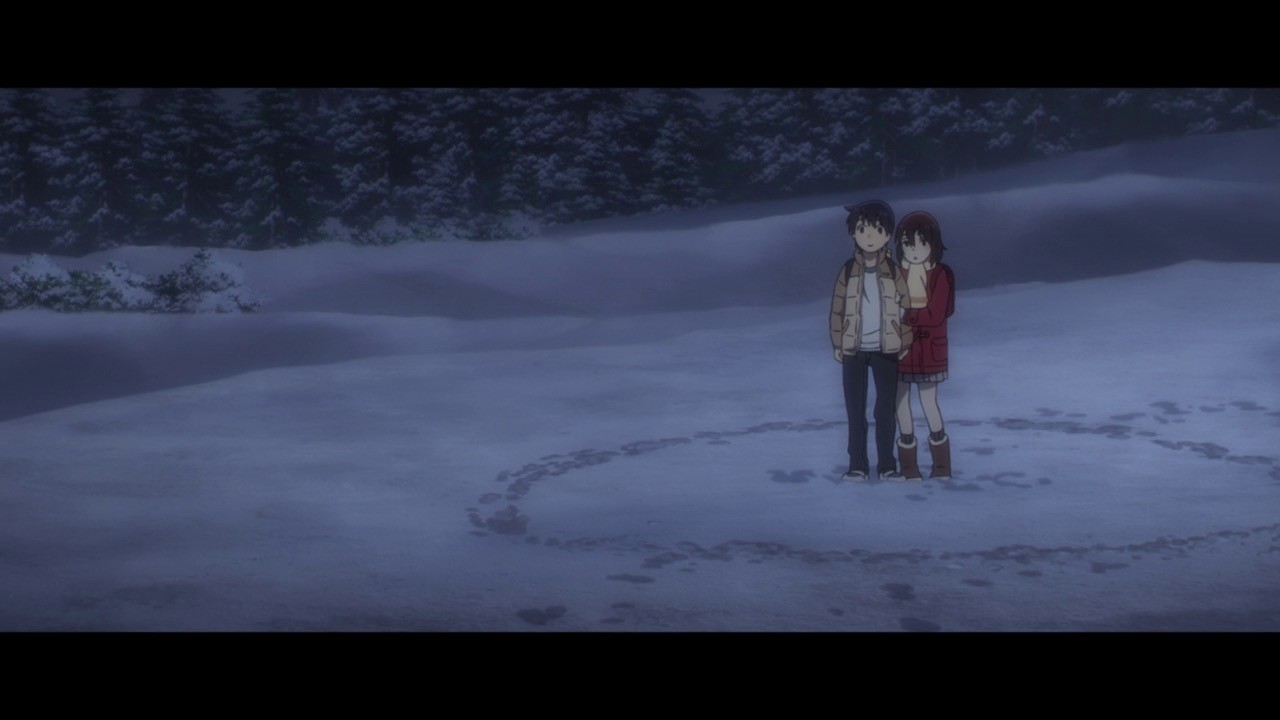
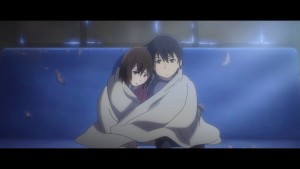
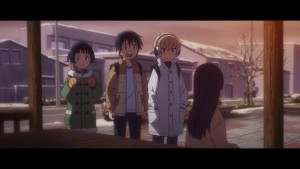
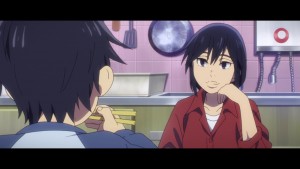
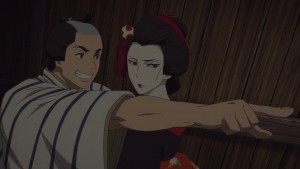

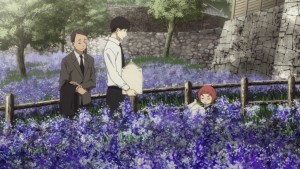
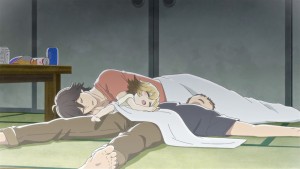
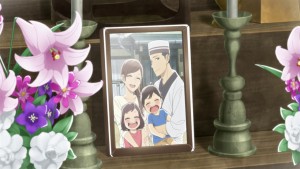

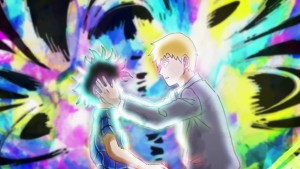

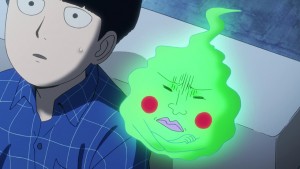
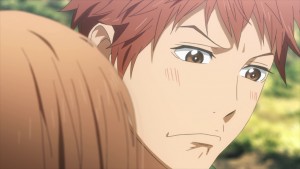
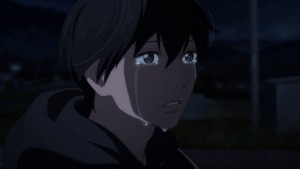
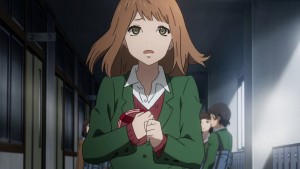

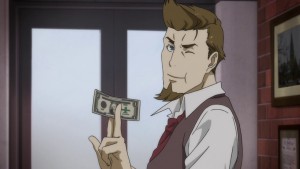
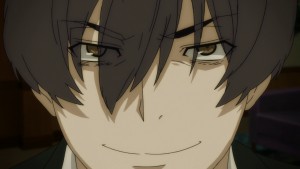

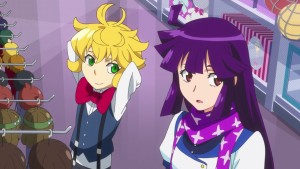
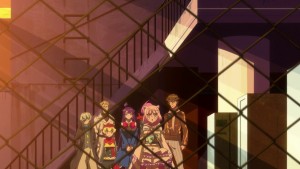
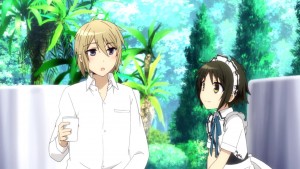
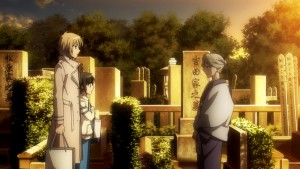
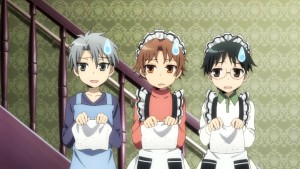
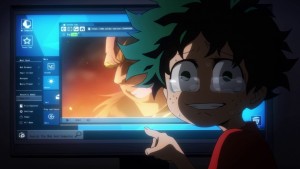
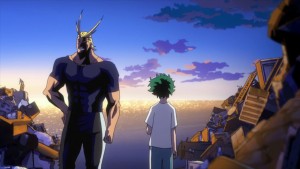
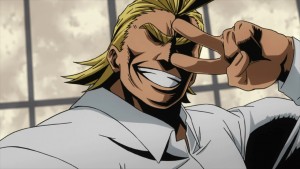
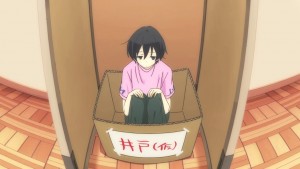
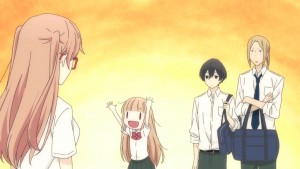
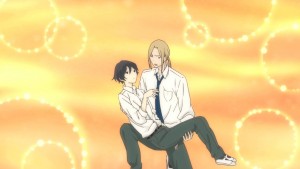
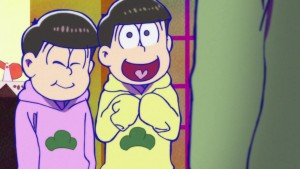
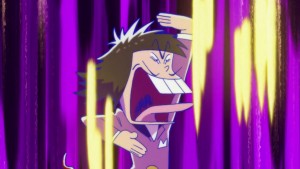



Alex
December 22, 2016 at 10:13 amNot sure if this is the right place to post my guess, but I’m not confident I’ll be anywhere close anyway so here we go :p
1. Boku Dake ga Inai Machi
2. Tanaka-kun wa Itsumo Kedaruge
3. Mob Psycho 100
4. 91 Days
5. Boku no Hero Academia
6. Poco’s Udon World
7. Natsume Yuujinchou Go
8. Orange
9. Yuri on Ice
10. This Art Club Has a Problem
Way too many to choose from but good luck everyone!
Guardian Enzo
December 22, 2016 at 10:42 amYup, this is the right place, thanks for playing!
Samu
December 22, 2016 at 10:24 amYo Enzo, here to play your guessing game. I think I know you well enough to get at least some of these right!
1. Boku Dake ga Inai Machi
2. Mob Psycho 100
3. Shouwa Genroku Rakugo Shinjuu
4. Udon no Kuni no Kiniro Kemari
5. Orange
6. Boku no Hero Academia
7. Concrete Revolutio
8. Fune wo Amu
9. Natsume Yuujinchou Go
10. Yuri on Ice
It’s hard once you get to the end of the list. Knowing your tastes, Akagami no Shirayuki-hime, 91Days, or Ushio to Tora could all get that #10 spot (or higher).
elianthos
December 22, 2016 at 10:42 amOoh dear. I think my guesses overlap with Samu’s. Same titles pool down to the exta options at least. Just still debating on actual placement, I’m still swapping those Top 10 positions around XD.
Re: honorable mention. I an see your reasoning about Osomatsu-san. Tonkatsu DJ Agetarou was the other candidate in my book :D, I am wondering it will end in your Top [10-]20 now instead.
Guardian Enzo
December 22, 2016 at 10:44 amYeah, that was a candidate. So was Pokemon S & M, believe it or not – I’m really digging it. But it’s less than a cour into what’s going to be a long run, presumably. And then I would have had to shoehorn Osomatsu into the Top 20…
sonicsenryaku
December 24, 2016 at 12:29 amoh wow that’s pretty cool that you’re following sun and moon. I would recommend actually watching xy/z as that was one of the few pokemon series that illustrates what pokemon is capable of with something effective writing and directing; a fine example of a children’s show done right. Now as for your top ten, i had visited ur blog in hopes to participate in the guessing game. Usually you would have your top ten list be at the top of the other posts so when i didnt see it i didnt think you were doing the guessing game this year…Blast it i should have scrolled down XD.
Anywho even if my guesses dont count id like to guess what’s on your list. Considering how much you appreciated yuzuru tachikawa’s efforts on mob psycho 100 (by the way, binge watching that show makes me appreciate how cohesive the first season’s narrative really is; mob psycho 100 is definitely the bees knees) id say that’s definitely in your top 3. Also, considering how much respect you had for concrete revolutio, and your love for boku dake, i would say the rest of your list would be as follows:
1.boku dake
2.mob psycho 100
3orange
4.concrete revolutio
5.natsume yuuchinjo
6.showa genroku
7.udon
8.91 days
Guardian Enzo
December 24, 2016 at 9:41 amWow, XY & Z has some pretty good reviews out there. Maybe if 2017 is as slow as it seems anime-wise it’s a candidate to marathon.
sonicsenryaku
December 24, 2016 at 10:00 amoh yea definitely; the narrative benefits from marathoning it (like everything else seemingly)
Duke of Earls
December 24, 2016 at 2:11 pmI love Pokemon and have always wanted the anime to be watchable. Do they reference old continuity? The thing I hated about the show over time was how Satoshi/Ash never seemed to make any progress as a character. New season, back to square one every time. That still a thing?
Guardian Enzo
December 24, 2016 at 2:33 pmWell, in S & M he goes to school. And rumor has it he’s actually going to have a birthday. That’s progress, ne?
Duke of Earls
December 24, 2016 at 4:02 pmWell, it’s different, haha. In all likelihood what I want is a pipe dream: I was 10, like Ash, when Pokemon first became popular in the US, and I guess I just wanted Ash to age alongside me (growing in competency over time). Then again, the fanbase for the games in the US seems to be full of adults, but that’s my unscientific, anecdotal observation and I have no idea what the situation is in Japan.
sonicsenryaku
December 24, 2016 at 5:42 pmthere are some hints of continuity here and there in the series but aside from that, continuity takes a huge back seat unfortunately. The closest you’ll get to feeling like ash has grown up in his journey is in XY where he is at his most mature. He acts like a trainer who has been doing his occupation for years and that mature demeanor serves a narrative purpose in supplementing the character arcs of the supporting cast. Sun and moon’s ash is more jubilant than his xy counterpart which makes the show tons of fun to watch but while he is still a competent trainer, there’s a bit of that mature air lost from the xy/z series. He now acts…well, his age which is still cool.
Zilla
December 22, 2016 at 10:42 amI’ll play! It’s hard because there were lots of anime that you enjoyed that I wasn’t fond of, and vice versa. But that is also what makes it fun!
01 Boku Dake
02 Shouwa Genroku Rakugo Shinjuu
03 Mob Psycho 100
04 Fune wo Amu
05 Udon no Kuni no Kiniro Kemari
06 Concrete Revolutio: Choujin Gensou – The Last Song
07 Boku no Hero Acaademia
08 Natsume
09 Orange
10 Sakamoto Desu ka
Zilla
December 22, 2016 at 2:51 pmThanks for letting me “cheat”!
01 Boku Dake
02 Shouwa Genroku Rakugo Shinjuu
03 Mob Psycho 100
04 91 Days
05 Fune wo Amu
06 Udon no Kuni no Kiniro Kemari
07 Concrete Revolutio: Choujin Gensou – The Last Song
08 Boku no Hero Acaademia
09 Natsume
10 Orange
Okay, I’ll stand by this even if someone else mentions a show I forgot 😉
Zilla
December 31, 2016 at 7:00 pmWow, I guessed 8/10 on the list, and 3 of them actually in place. I felt like I was doing much worse than that as you were listing them!
Bel
December 22, 2016 at 11:00 amOkay, this is mostly a shot in the dark.
1. Mob Psycho 100
2. 91 Days
3. Shouwa Genroku Rakugo Shinjuu
4. Boku Dake ga Inai Machi
5. Ajin
6. Natsume Yuujinchou Go
7. Yuri on Ice
8. Boku no Hero Academia
9. ReLIFE
10. Fune wo Amu
Earthling Zing
December 22, 2016 at 11:50 amI’m surprised Osomatsu-san didn’t make your top 10 ^^”
I’ll give the guesses a shot too:
1. Boku Dake ga Inai Machi
2. Udon no Kuni
3. Shouwa Genroku Rakugo Shinjuu
4. 91 Days
5. Mob Psycho
6. Orange
7. Boku no Hero Academia
8. Tanaka kun
9. Ushio to Tora
10. Akagami no Shirayuki hime
Those last five spots are brutally hard; they could go either way…
Zilla
December 22, 2016 at 2:14 pmArgh! 91 Days! I forgot 91 Days!
Guardian Enzo
December 22, 2016 at 2:35 pmYou can still change your guess – until I post #10 all bets are off.
whemleh
December 22, 2016 at 11:51 amEnzo, this is impossible! Not only are there easily 14-15 worthy candidates, I’d bet it’s fact that if you were to write your list again 2 weeks or a month from now, it’d be laid out differently. So many of the spots will just feel so arbitrary.. So let’s guess how your whims are gonna shake this out.
1. Erased
2. Orange
3. Mob Psycho 100
4. 91 Days
5. Concrete Revolutio
6. Showa Genroku Rakugo Shinju
7. The Great Passage
8. Udon no Kuni no Kiniro Kemari
9. Tanaka-kun
10. Akagami no Shirayuki-hime
As a bonus I’ll hazard Kono Bitsu & Ushio to Tora as the toughest cuts. Damn fine year, to be sure.
Redice
December 22, 2016 at 3:05 pmIf even Osomatsu-san didn’t make it into the top 20, perhaps 2016 wasn’t as bad a year for anime as you always made it out to be.
Guardian Enzo
December 22, 2016 at 3:11 pmYou must have commented on the wrong site. I’ve been saying for months that 2016 was a strong year.
Faolin Eye
December 22, 2016 at 3:25 pmWell, let’s play this game, though this year it seems quite hard to guess even the top three show’s correct order:
1. Shouwa Genroku Rakugo Shinjuu
2. Boku Dake ga Inai Machi
3. Udon no Kuni no Kiniro Kemari
4. Mob Psycho 100
5. Orange
6. Boku no Hero Academia
7. 91 Days
8. ReLIFE
9. Concrete Revolutio: Choujin Gensou – The Last Song
10. Fune wo Amu
laney
December 22, 2016 at 4:30 pm1. Boku Dake ga Inai Machi
2. Mob Psycho 100
3. Shounen Maid
4. 91 Days
5. Orange
6. Tanaka-kun wa Itsumo Kedaruge
7. Udon no Kuni no Kiniro Kemari
8. Kono Bijutsubu ni wa Mondai ga Aru
9. Boku no Hero Academia
10. Concrete Revolutio
This was hard. I could see Shouwa Genroku Rakugo Shinjuu, Ushio to Tora, The Great Passage, Ajin, and Yuri on Ice slipping in somewhere too (those round out my guesses on your top 15). Thanks for another great year, and I can’t wait to see the full list.
Ouki’s Majestic Lips
December 22, 2016 at 9:55 pmI know its too late for me to enter the Haiku Prize, but it looks fun, so fuck it:
10. XXX
9. Konobi
8. My Hero Academia
7. Mob Psycho 100
6. Shounen Maid
5. Shouwa Genroku Rakugo njuu
4. Ushio to Tora
3. 91 Days
2. Erased
1. Yuri on Ice
Guardian Enzo
December 22, 2016 at 10:19 pmYeah, feel free to keep guessing, though laney’s guess is the last eligible one. And to clarify, the prize is an actual series writeup this time – not a haiku.
Gina
December 23, 2016 at 4:09 amReally surprised that Osomatsu didn’t make it to your Top 20, I tot it would have registered the mid 10+ at the very least.
This is def a year of surprises and delightful adaptations. Happy to see anime cover a couple of obscure topics
Guardian Enzo
December 23, 2016 at 7:58 amWell… Did you read the blurb on Osomatsu?
Simone
December 24, 2016 at 2:33 am“Does that mean we’ll see a long-term, comprehensive anime adaptation?”
I think at this point the new standard for long-running shonen adaptations is “short and sweet bursts”. It seems like that’s the approach with Shingeki no Kyojin, it was the way they adapted Assassination Classroom, it seems the way they’re adapting Shokugeki no Soma, and same applies here. Even if they keep it up I think we’ll just see one or two cours every now and then and a pause whenever the manga material runs out. Which seems sensible to me, all in all, compared to the old practice of either diluting the material to death Dragonball Z-style or inserting random anime original filler arcs like in Naruto and Bleach. All those shows suffered a lot from those practices.
Gina
December 25, 2016 at 2:53 amHahah it would be good if it can get the HxH treatment, long running seasons with consistent quality, but I don’t think it will happen for BnHA since it is still fairly new. Short seasons every few years would work great for me if they keep it at this standard.
hgfdsahjkl
December 24, 2016 at 5:51 ammob psycho not being first is unacceptable for me 😀
anyway my favourite of the year goes like that
1-mob psycho
2-haikyuu
3-boku no hero
Duke of Earls
December 24, 2016 at 4:05 pmMob Pyscho and Boku no Hero were probably my favorites this year. Boku Dake ga Inai Machi was really great, too, though the ending, while good, didn’t feel up to par with the rest of the show.
Simone
December 25, 2016 at 3:34 am“But for those few of you that chose to give it a chance, you saw that it was both light and entertaining and deceptively deep.”
Dunno, I gave it a chance and after a few episodes I just found it a bit boring. Basic good-feel stuff, a dash of random creepiness here and there, and a lot of Japan’s special attitude to child labour, to which I become more tolerant when it is at least accompanied by Miyazaki’s all-around artistic flair and charm. And technically speaking it was utterly unimpressive.
Zilla
December 25, 2016 at 6:34 amWow, so happy to see Shounen Maid on the list. I love that show but because it is so quiet, or boring to some, I totally didn’t expect it to rank.
Spencer
December 26, 2016 at 6:06 pmReally pulling for Rakugo to take home the number one spot. I know it’s likely to go to Erased, and that show deserves plenty of praise, given all the negativity that accompanied its finale. But Rakugo’s classical storytelling, veteran composition, and overall polish make it feel like an instant classic. To me, the only series of this decade to surpass it has been Mushishi Zoku Shou.
samui
December 26, 2016 at 8:06 pmCrossing my fingers for orange and Rakugo to make it to the Top 5. Pleeeeaaase.
PS: Shirayuki-hime won’t make it, is it?
Karmafan
December 27, 2016 at 6:54 amElitist type anime series usually end up as commercial failures. Its no surprise that 91 days did not sell well. Same thing goes for many “Oscar” type movies released at the end of the year for Oscar consideration. I’m sure Fune wo Amu will probably suffer the same fate.
Guardian Enzo
December 27, 2016 at 7:46 am“Elitist type”? Does that mean not a LN adaptation, yuri or harem?
Booshwashna
December 27, 2016 at 7:24 pmI just watched Orange today and yesterday and read your posts as I went along. I was a bit shocked to hear that people hated Kakeru. I’m of the David Foster Wallace bent. Over-saturation of Irony is a poor and flippant means of dealing with the world. It’s occurred to me as of late that Truth unadulterated is much more difficult than I ever really noticed. So often we try to nudge and paint our truths so as to attain what we want without risking looking foolish. Teenagers, especially shy, depressed, or emotionally overwhelmed teenagers, might be especially guilty of this. We see Naho and Kakeru both try to make sure there’s a landing pad for their truths to set down on, but so often the unsaid becomes impossible to decipher. There’s a kind of stagnation that settles in where miscommunication and beating around the bush become Sisyphean awkwardness. In our world, being a little older, I see the effects of Irony that have led so many people to an equally infantile end. An obsession with not having to deal with emotions and risk, the so called chill relationship. I am reminded that if you don’t believe in love or commitment or success or the guiding star that is the transcendent to which you aspire, then you will never stumble upon even a rock that has touched your dream. To me, these children, with all of their faults, hiccups, and barefaced emotion, are more mature than many of our adults, because whatever mistakes they made, they believed. They fought, and the most important message, love, is what they communicated. If growing up is trading that for a comfortable chair and wry tongue, they take me to Neverland.
I know I’m late, but thank you for the write ups. It’s always a pleasure. I suppose I should add that my best friends mother committed suicide when we were young, so perhaps you’re right about first hand experience. Still, I’d like to think anyone could empathize if they really wanted to. Sometimes, I’m afraid they don’t because they don’t want to admit that they could do the same thing. As far as I’m concerned, if one should take anything away from the parallel worlds theory, it’s that we’re all capable of anything. Lie and hate, and you can end up sinking all the way to a Nazi Guard. Aim forever towards something higher than yourself, tell the truth even when it’s difficult, show love to the common man and you can reach Martin Luther King, Ghandi, Jesus and Buddha. That selfless love you talked about. No one is saying it’ll be easy. In fact you’ll probably put your foot in your mouth like the kids in Orange a good number of times, but the path is always open.
Guardian Enzo
December 27, 2016 at 7:30 pmThanks for that very kind, thoughtful and well-spoken comment. You would indeed think that empathy is easy, but in my experience it’s not so – personal experience is the most reliable predictor of empathy in any given situation.
saras
December 28, 2016 at 4:27 amThank you for the beautiful words, which I will keep in my heart. I will remember to have empathy and give selfless love, and I hope others will do the same. I’ll be proven wrong many times, I’m sure, but at least I’m trying.
As for Orange, even with all the problems it had, I’m pleased that it presented the experiences of living with depression quite well. And no matter what people may say about the romance between Naho and Kakeru, I think the love in their friend group – that agape you talked about – is the one that really saves the day.
Ronbb
December 27, 2016 at 8:35 pmThere are many reasons why LiA has become a staple anime blog for me, but one thing — which I find cute — that is obvious to us is how Enzo is actually pretty straight up about his likes or dislikes. I personally have a slightly different top 10 favourites this year, but I’m not surprised if it goes like this:
1) Mob Psycho 100 — Tachikawa Yuzuru totally nailed it AGAIN, and I remembered how Enzo was blown away while trying to restrain from spoiling us…bet that wasn’t easy to contain the excitement bubbling up inside… 🙂
2) Boku Dake ga Inai Machi — we have two strong instalments this Winter, and I remember how Enzo picked this one as his fav while I leaned towards Rakugo
3) Udon no Kuni no Kiniro Kemari — I think many of us have read it numerous times how this show touched Enzo’s heart
I may get the order wrong, but what I’m trying to say is that if we pay attention, things can be pretty predictable and cute… Instead of comparing my top 10 fav with Enzo’s, I hope it’s okay to switch gear and talk about earworms:
1) Rakugo’s ED: “Kawa, Taredoki” by Shibue Kana — absolutely my fav this year and a perfect companion when relaxing on a patio or sitting next to a fireplace with a glass of wine
2) Rakugo’s OP: “Usurahi Shinjū” by Hayashibara Megumi — a fantastic rendering of a fantastic drama
3) Fune wo Amu’s ED: “I&I” by Leola — what a soothing entry by a rookie
4) Mayoiga’s ED: “Ketsuro” by Katahira Rina — it’s her voice…
5) Haikyuu!! Karasuno Koukou VS Shiratorizawa Gakuen Koukou’s ED: “Mashi Mashi” by NICO TOUCHES THE WALLS — an upbeat entry letting you dance like a high schooler again
6) Ajin’s ED: “How Close You Are” by Miyano Mamoru — it’s Miyano-san, period
Not bad for a year indeed…
saras
December 28, 2016 at 4:52 amRonbb, I LOVE that you went and pulled out the earworms because I absolutely agree with you! Your top three songs are also my top three songs – though I admit I like jazz/jazzy songs so I’m very biased here ^_^
“Kawa, Taredoki” is so soothing, too bad it’s just so short! I can’t wait to listen to the entire Rakugo soundtrack. Hayashibara Megumi’s singing in “Usurahi Shinju” also sounds so effortless, like she’s just whispering, but it’s so nuanced at the same time. As for “I&I”…what a straightforward, lovely, romantic song for a straightforward, lovely couple Majime & Kaguya. I wouldn’t stop singing that song – if only for my sore throat!
I’ve been a NICO TOUCH fan for a while so I hope you check out their other songs as well! “Mashi Mashi” is a fun song so you’ll probably enjoy “Bungy” and “Te wo Tatake” if you haven’t done so already ^_^
Aah sorry, this has turned into a music rant…I’m bad at the guessing game so I’ll just wait till Enzo reveals all! I look forward to the top pick reviews.
Ronbb
December 28, 2016 at 10:33 amThanks saras for the recommendations…will definitely check out the two songs that you mentioned :).
I missed out Yuri!!! on Ice’s OP: “History Maker” by Dean Fujioka — I think I like the sequence more than the song, but together they make a nice visual and aural feast, and there are not that many songs in 3/4 time.
saras
December 28, 2016 at 5:19 pmMy pleasure 😉
What a coincidence – I was also thinking about “History Maker.” Like you, I enjoyed the song together with the sequence better, and I thought adding more flair to the op sequence gradually per episode was a genius idea. It kept my eyes glued to the op sequence for sure.
Considering Yuri!!! on Ice’s popularity with both anime and non-anime fans worldwide, I think “History Maker” may just be the anime song of 2016. The show made history for sure.
Ronbb
December 28, 2016 at 9:46 pmYes, that may be one of the popular anime songs of 2016, and it’s always great to have a decent show well received by non-anime fans.
saras
December 30, 2016 at 2:41 amAh that reminds me – the Yuri!!! on Ice Original Skate Songs CD came out recently and it is quite fantastic, IMHO. Whereas I’m more or less meh on the OP and ED songs, almost every skating song in the CD has its own distinct flavor – classical, jazz, American pop, Disney musical, techno, rock etc. It’ll be interesting to see if actual figure skaters use them for their own programs in the future!
Ronbb
December 30, 2016 at 6:31 pmThanks saras. 🙂 Will so totally check it out…wish to own the CD.
Simone
December 28, 2016 at 2:58 am“Anime has become so obsessed with irony that any series that plays it straight emotionally is dismissed as manipulative and (God help us) “melodramatic”.”
I think at times you’re a bit too absorbed in your perspective in this sense to see the point other people are driving at. Soliciting emotional response is a very gut level kind of thing. That people didn’t take Orange seriously merely signifies that its communication of its emotional core wasn’t really that good. I’d say in these cases the quality of a piece of art is not demonstrated by its ability to communicate to those who already *know* the feelings that it’s talking about, but to those who don’t. For someone who has a personal investment it’s easy to have simply their memories triggered – the show has to do basically little beyond mentioning the issue itself and toss around a couple of flags. Those who don’t however need to be involved through carefully constructed bonds with the characters themselves. And if anime can drag you into the subtleties of traditional Japanese theatre or dictionary making I can’t see why it couldn’t describe depression as well with an effective tone. Orange was simply not able to do that. Putting it into the framework of anime being “obsessed with irony” is a bit weird – most people, even anime fans, form their tastes on a wide variety of media, and that informs the way their emotional reception works. And if anything, “teenagers write to themselves back in time to save a suicidal schoolmate” would already be looked upon as a suspiciously melodramatic premise if it appeared as the synopsis for a western live action movie or TV show. If anything we accept from anime a greater amount of emotional earnestness than we’d buy in a more realistic setting because we see it as part of the abstraction and stylising creative process. Even with that caveat, Orange managed to be just too much at times, and to suggest a not-so-healthy message that in the end all you need to survive depression is to find your soulmate (a proposition that personally I find annoying because for example for me there’s so much more than romantic love to personal satisfaction, and I think in fact depending too much for emotional support on your partner is a rather toxic attitude that might end up poisoning both of your lives).
Orin
December 28, 2016 at 4:31 amI mostly agree with your comment in general even though I love Orange, but I don’t understand how you could said that :
“Orange managed to be just too much at times, and to suggest a not-so-healthy message that in the end all you need to survive depression is to find your soulmate ”
This is absolutely not the message that is conveyed in Orange, I don’t know how you came up with that.
Guardian Enzo
December 28, 2016 at 7:56 amI’m with you on this, Orin. That sure as hell isn’t the message I took away from Orange. MMV I guess.
Simone
December 28, 2016 at 4:43 pmWell, friendship plays a role, but a lot of stress is placed on Kakeru and Naho’s romantic pairing – a match made in Hell if there ever was one, because the two absolutely don’t look like a healthy couple to me. You could argue that friendship and not romance is the main focus, I guess it depends on perception, but to me it seemed that the heaviest load fell on that side of the story, and the take out is that somehow Kakeru gets saved also by the Power of Love.
Not to say that support doesn’t help, but it’s not the be all, end all either, and perhaps the wrong person can actually do harm rather than good.
Ouki’s Majestic Lips
December 28, 2016 at 1:04 pmHuh I just noticed that no one, including myself looking at it retrospectively, put Kyoukai no Rinne in their Top 10 Lists, now I’m depressed
Zilla
December 28, 2016 at 4:45 pmI have Kyoukai no Rinne on my top twelve list (because screw base ten!), I just didn’t put it for what I thought would be Enzo’z top ten!
sonicsenryaku
December 29, 2016 at 12:16 am“Bones is the shit” truer words have never been spoken my friend. The best part of all this is that mob psycho season 2 will make the first season seem like child’s play; tachikawa and kameda are just getting started. I really hope for that season 2 announcement sometime soon, if anything probably after academia season 2 finishes it’s run (which i hope is another 13 ep cour; no need to adapt so much of the material per season)
sweejen
December 30, 2016 at 4:58 pm“There’s no reason Shouwa Genroku Rakugo Shinjuu couldn’t have been a live-action instead of an anime – but then, there’s no reason Picasso couldn’t have taken photographs of Guernica instead of painting it.”
Please humor me, I just want to dwell on the lovely truth of this sentence.
Guardian Enzo
December 30, 2016 at 5:11 pmDon’t let me get in the way of that.
Akka
December 30, 2016 at 5:56 pmI suppose that this #2 means Fune wo Amu will get the #1.
Neither Ajin nor RElife get a spot in the top 10, that’s pretty incredible and I guess it’s pretty telling how good this year was.
Ronbb
December 30, 2016 at 6:46 pm“Shouwa Genroku truly is anime as art…”
So totally true…love Omata-san’s direction dearly…
Earthling Zing
December 30, 2016 at 7:11 pmWe all know what the #1 series is now…
I’m glad that Showa Rakugo will be one of the rare stories that will be fully adapted into anime. I don’t think anyone expected it, but its nice that series so un-animelike can still get full adaptations.
Spencer
December 31, 2016 at 1:26 pmOn the subject of “melodrama,” I don’t think there’s some big ironic trend in anime, specifically, that’s causing these accusations to be thrown around. In fact, one of the reasons I love anime is for its consistently earnest depiction of young adult emotion. There’s a larger, worldwide movement towards irony in popular media that’s been going on for decades now, and anime hasn’t been exempt from that, but it has put up an above-average level of resistance to it.
Anyway, whether a story is perceived as melodramatic, as opposed to just dramatic, is down to personal taste and experience. For example, I bought into Orange wholeheartedly, but thought Ano Natsu was a trope-filled ball of hot air. As for Ano Hana, I fall somewhere in the middle; it had a big emotional impact on me, but even through my tears I often thought it was laying it on a bit thick. Anime fans aren’t such binary creatures as to either embrace or reject all sentimental series. Some shows speak to us more than others, and we respond accordingly.
So why did Orange fail to speak to so many people? Its supporters will point to production fiascos and the admitted silliness of the Bermuda Triangle stuff. Its detractors will paint it as hollow or manipulative, attacking the substance of the show rather than the style. The correct answer, though, is that it doesn’t matter. With a show like this one, what matters is whether it spoke to YOU. I loved Orange from the first episode to the last, and I don’t particularly care to analyze why, or to explain away the negativity it received elsewhere. What difference would that make?
HoTaRu
December 31, 2016 at 6:22 pmAre you doing a poll for everyone’s top tens this year? I don’t know if it was mentioned somewhere so sorry if my question is redundant. I’m always curious each year since I sometimes end up checking out shows that really weren’t on my radar because so many other people really love it. After reading your post for your number one, I hope that someday you will do one discussing the differences of the Boku Dake ga Inai Machi manga and anime after people have had time to read it. The manga has been licensed by Yen Press and is being released in two-volume hardback editions starting in February.
Karmafan
December 31, 2016 at 7:00 pmErased was my top series of the year as well. Such a great story.
Ronbb
January 1, 2017 at 1:49 amWhile we still have the Top 11-20 and the Best of the Best to be unveiled (no pressure, Enzo), just wish to drop a line and wish everyone an awesome 2017! A special shout out to Enzo for keeping LiA fun! Great health and happiness to you all.
Simone
January 1, 2017 at 5:12 amFor me, kudos to ERASED for all the Kajo-related stuff, but when your serial killer villain is less realistically written than Jojo’s, you’re clearly doing it wrong. I would have definitely placed Rakugo as first, and probably Mob Psycho as second, before I even started considering ERASED.
Karmafan
January 1, 2017 at 6:23 amDon’t forget that they were limited by the 12 episode format.Even a 13th episode meant they could have devoted one just to the killer and his backstory.
Guardian Enzo
January 1, 2017 at 8:26 amEven 12 is one more than a Noitamina series usually gets.
Simone
January 1, 2017 at 2:06 pmThe episode count might not have helped, but IMHO “backstory” is not what a character makes. To keep up with the Jojo comparison, Yoshikage Kira’s backstory was only delivered as a couple minutes’ speech in the final episode and it was anyway about how SPOILERS he basically jacked off to the Mona Lisa’s hands as a kid END SPOILERS so yeah. IMHO the issue with that is more subtlety in writing and delivering. ERASED failed that entirely, with a killer who as soon as he was discovered pulled off a slasher smile worthy of Hirano’s Drifters antiheroes. Ironically, the show that Enzo listed as #2, Rakugo Shinju, was instead absolutely masterful at this technique of condensing as much meaning as possible in non-verbal, subtle cues.
zeroyuki92
January 1, 2017 at 9:28 amKinda surprised that you put ERASED in #1, Enzo. I would have put it at the top spot, but with one caveat: Exclude every “present time” part of it, especially the post timeskip part.
So yeah, it’s still on my top 5, but it left me a rather bitter aftertaste that made my final impression to be much worse compared to my initial. That’s such a missing potential for me since I still feel some episodes of it was absolutely stunning.
(I think I put Rakugo instead for the #1)
That said, I’m thinking of starting Mob Psycho due to your review. Maybe Udon and Tanaka-kun too after I could get rid of my absurdly long to-watch list of SoL shows. Thank you and happy new year, wish you the best for your personal and blogging life!
Simone
January 1, 2017 at 2:20 pmI’d recommend Mob Psycho 100 without reserves, with Udon personally I have to say I found somewhat better the previous season’s “Sweetness and Lightning” (which instead Enzo didn’t even watch). The premise is in a way similar – a single father raising a child, without the supernatural element in S&L’s case, their relationship being built around a food theme, some musings about loss and coping – but in the end that one kept my interest way more (not in small part due to me being a bit of a culinary geek I suppose, at least in theory).
Zilla
January 1, 2017 at 2:48 pmInteresting. I would have described Amaama to Inazuma as “A new widower learns to cook and deals with the trials and joys of being a single parent” and Udon no Kuni no Kiniro Kemari as “a young man deals with the regrets of losing his father and re-examines the choices he has made in his life”. I enjoyed both of them quite a bit, and both needed some serious suspension of disbelief (one in that a preschool child will play quietly for the HOURS those meals take to prepare, and the other that tanukis are supernatural creatures who take human forms), but other than that and featuring a small child and adult male, I didn’t find any similarities at all.
Anime is cool in that two people can watch the exact same thing and get entirely different meanings out of it.
Simone
January 1, 2017 at 2:54 pm“(one in that a preschool child will play quietly for the HOURS those meals take to prepare, and the other that tanukis are supernatural creatures who take human forms)”
I like that you put these two things on the same exact ground of unbelievability XD.
Anyway, I guess it’s just that I think I spot a trend in this sort of show, which leads me to stressing the similarities. We make a big deal of how many light novel shows are “power fantasies” and have “self insert characters” but I get the impression that these sort of SoL are fantasies too – not of power, but of family and familial love. I can sort of relate being a 30-something without any children not many prospects in the matter, and I imagine Japan’s equivalent generations to be even in deeper trouble with this. They ARE one of the lowest countries by birth rate in the world after all, if not the lowest. There’s something sad about the fact that something as simple as “I’d like to have a simple life and be able to raise a child” is peddled as a fantasy by fiction but here we are.
Guardian Enzo
January 1, 2017 at 5:01 pmI watched Sweetness & Lightning (I think I even blogged a couple of eps) – I just dropped it after it failed to win me over in three episodes or so. To me it was very one note and way too pandering – and I’m an absolute food geek.
Jorge Carranza
January 1, 2017 at 10:50 amSo what’s the consensus, Erased or Jojo’s Bizarre Adventure for best serial killer thriller? I enjoyed both.
Simone
January 1, 2017 at 2:55 pm*Serial killer thriller involving a time loop and a child ultimately foiling the plans of the big bad thanks for foreknowledge.
And personally I say Jojo’s :D.
Stereoman
January 1, 2017 at 11:21 amWhat a nice read! This year I watched quite a bit so I recognise most of these titles. The ones I have not yet seen I will definitely pick up! I’ve always trusted your taste! Happy new year, Enzo!
Spencer
January 1, 2017 at 2:52 pmGreat list as usual, Enzo. Love the inclusion of Tanaka-kun, which is one of my favorite anime comedies of this decade. You’ve inspired me to give Concrete Revolutio another go, as well – it was the Space Dandy comparison that did it, if I’m being honest.
Thanks for your tireless blogging throughout the past year. We’ll be counting on you to bring those hidden gems to our attention in 2017, as well, and to write about series both big and small as only you can.
Happy new year!